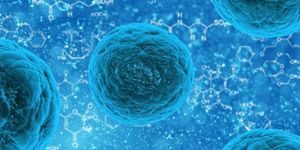Detecting "Baby Bubble Disease" With A Simple Checklist
Most babies born with severe combined immune deficiency (SCID) don’t live past their first year of life, but there’s a chance that improving the speed of diagnosis could give them more time to get treatment. Researchers from the University of Hong Kong have created a checklist of markers that raise red flags for SCID, hoping to improve the ability of doctors to recognize and diagnose this rare condition.
SCID isn’t caused by one specific mutation. Rather, several different gene mutations that all result in T and B cells defects can lead to SCID, which is an inherited condition. Each type of SCID is named for the mutated gene that negatively affects the immune system. For example, XSCID, the most common form of the disease, is caused by a gene mutation on the X chromosome. This particular gene is responsible for producing a receptor immune cells need for activation.
Without the immune system functioning at full steam, babies are extremely prone to infection: ear infections, pneumonia, bronchitis, oral thrush, diarrhea, and more. Oral thrush is a yeast infection that produces white, sore areas in the mouth. It, along with the other infections listed, are common in babies without SCID, but babies with the disease are more likely to be sick and be sick more often.
Suffering multiple infections due to a muted immune system prevents the baby from growing and gaining weight like healthy babies should, only making the prognosis worse. SCID is almost always fatal within a baby’s first year of life. There are treatment options, bone marrow stem cell treatment and gene therapy, but SCID is often diagnosed too late to give any of these treatments a chance to work.
This is the motivation behind the new University of Hong Kong study: empower doctors to diagnose SCID as soon as possible. Experts say that treatment for SCID should occur within the first three-and-a-half months of the baby’s life, but their study of 147 participants showed that the average age of diagnosis was four months. It took doctors an average of two months to diagnose a patient with SCID.
"This demonstrates the failure of our medical training and systems in using family history to aid earlier SCID diagnosis. The recognition of SCID by doctors is poor in Asia, resulting in delayed diagnoses that jeopardize the chance of treatment success," explained lead author Yu Lung Lau. "We wanted to see if we could identify any clinical features that would help doctors to diagnose SCID earlier.”
Of the 147 study participants, 94 percent showed at least one of the SCID markers on the new checklist Lau and the team from the University of Hong Kong produced. What goes on the list?
- Family history of early infant death
- Oral thrush
- Bacillus Calmette-Guerin (BCG) infections
- Low absolute lymphocyte counts
BCG is a vaccine to build immunity against tuberculosis and an immunotherapy to treat bladder cancer, but complications from either application can arise. Seeing any one of the four markers should be a red flag to the baby’s doctor. After the doctor recognizes one or more of the markers on the checklist, Lau recommends that they should look further into the baby’s lymphocyte levels.
Treatment options for babies with SCID are few and not always effective, but as scientists learn more about how to make those options more successful, doctors can learn to diagnose SCID as soon as possible. This will give SCID babies the best chance at living.
The present study was published in the journal Frontiers in Immunology.
Sources: National Human Genome Research Institute, MedlinePlus, Medicine, Frontiers









